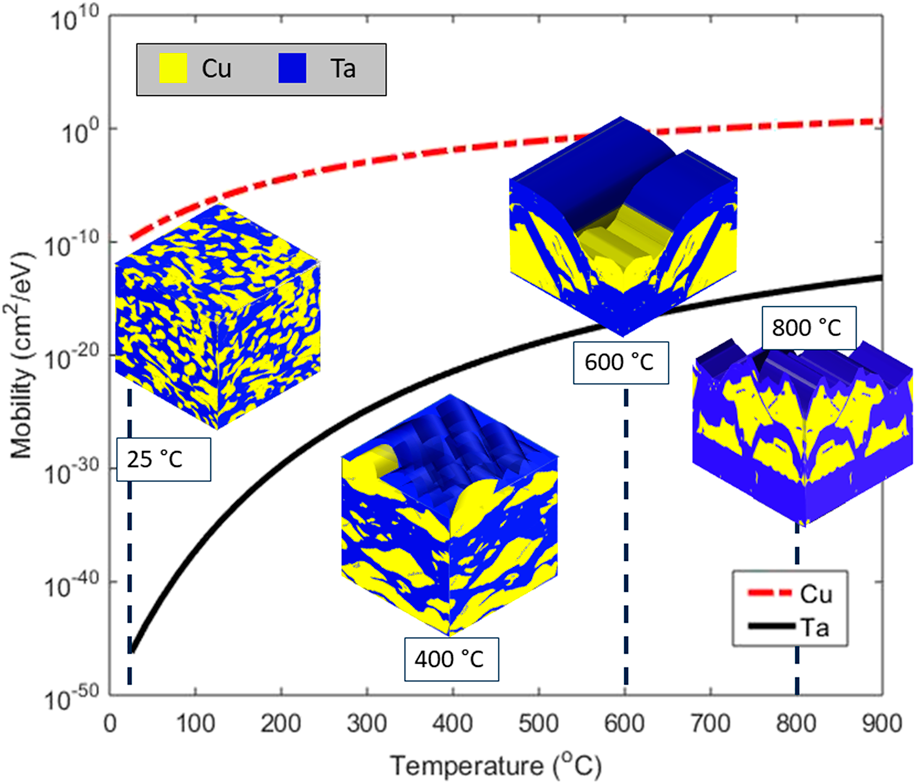Article contents
Microstructural characterization of phase-separated co-deposited Cu–Ta immiscible alloy thin films
Published online by Cambridge University Press: 26 May 2020
Abstract

Elevated temperature co-sputtering of immiscible elements results in a variety of self-organized morphologies due to phase separation. Cu–Ta is used as a model system to understand the evolution of phase-separated microstructural morphologies by co-sputtering thin films with nominal 50–50 at.% composition at four temperatures: 25, 400, 600, and 800 °C. Scanning/transmission electron microscopy of the film cross sections showed the microstructure morphology varied from nanocrystalline Cu–Ta at 25 °C to a wavy ribbon-like structure at 400 °C, to Cu-rich agglomerates surrounded by Ta-rich veins at 600 and 800 °C. In the agglomerate-vein morphology, microstructural features were present on two length scales, from a few nanometers to a few tens of nanometers, thus making the structures hierarchical. On the nanoscale, the Cu-rich agglomerates contained Ta precipitates, whereas the Ta-rich veins had embedded Cu nanocrystals. The various microstructures can be attributed to the highly disparate constituent element interdiffusion at the deposition temperatures with the Cu having orders of magnitude higher mobility than Ta at the deposition temperatures. This study of processing–microstructure relationship will be useful in guiding the design of hierarchical multiphase microstructures in binary or multicomponent thin films with tailored mechanical properties.
- Type
- Novel Synthesis and Processing of Metals
- Information
- Copyright
- Copyright © Materials Research Society 2020
References
- 10
- Cited by





